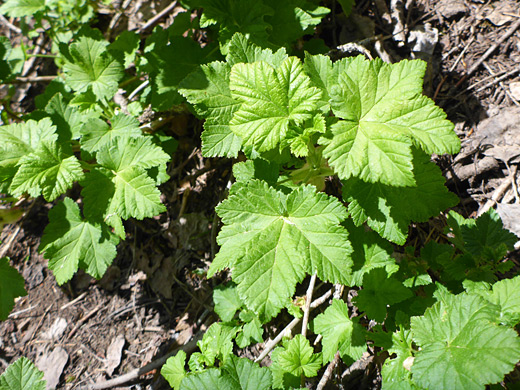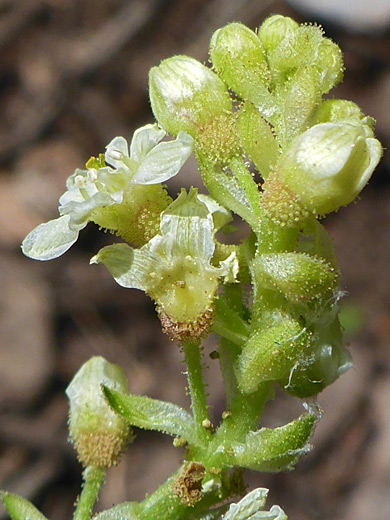Common name:
Wolf's currant
Family:
Scientific name:
Ribes wolfii
Main flower color:
Range:
The Four Corners states, and small parts of the Pacific Northwest states
Height:
Up to 15 feet
Habitat:
Meadows, moist woodland, from 5,500 to 12,500 feet
Leaves:
Maple-like; shallowly to deeply divided into 3 or 5 toothed lobes; up to 3 inches across
Season:
May to August
Rbes wolfii, a shrub, is most widespread across the Rocky Mountains of Colorado and northern New Mexico, with lesser occurrences in Arizona, southern New Mexico, the Wasatch Range in Utah, and a small area of the Pacific Northwest.
Stems have no spines or prickles, but do have a covering of both stalked and sessile glands, as do the petioles, which are little shorter than the leaf blades. Leaf surfaces are generally hairless and non-glandular.
Flowers are arranged in clusters of between seven and 25, and are attached by glandular pedicels, subtended by lanceolate bracts. Flowers are formed of a pale green or pale pink hypanthium tube, relatively short, topped by five whitish sepals - about twice as long as the tube - and five similarly colored petals. Fruits are glandular, egg-shaped black berries, up to half an inch across; they are produced only infrequently.
Stems have no spines or prickles, but do have a covering of both stalked and sessile glands, as do the petioles, which are little shorter than the leaf blades. Leaf surfaces are generally hairless and non-glandular.
Flowers are arranged in clusters of between seven and 25, and are attached by glandular pedicels, subtended by lanceolate bracts. Flowers are formed of a pale green or pale pink hypanthium tube, relatively short, topped by five whitish sepals - about twice as long as the tube - and five similarly colored petals. Fruits are glandular, egg-shaped black berries, up to half an inch across; they are produced only infrequently.
All Contents © Copyright The American Southwest | Comments and Questions | Contribute | Site Map




